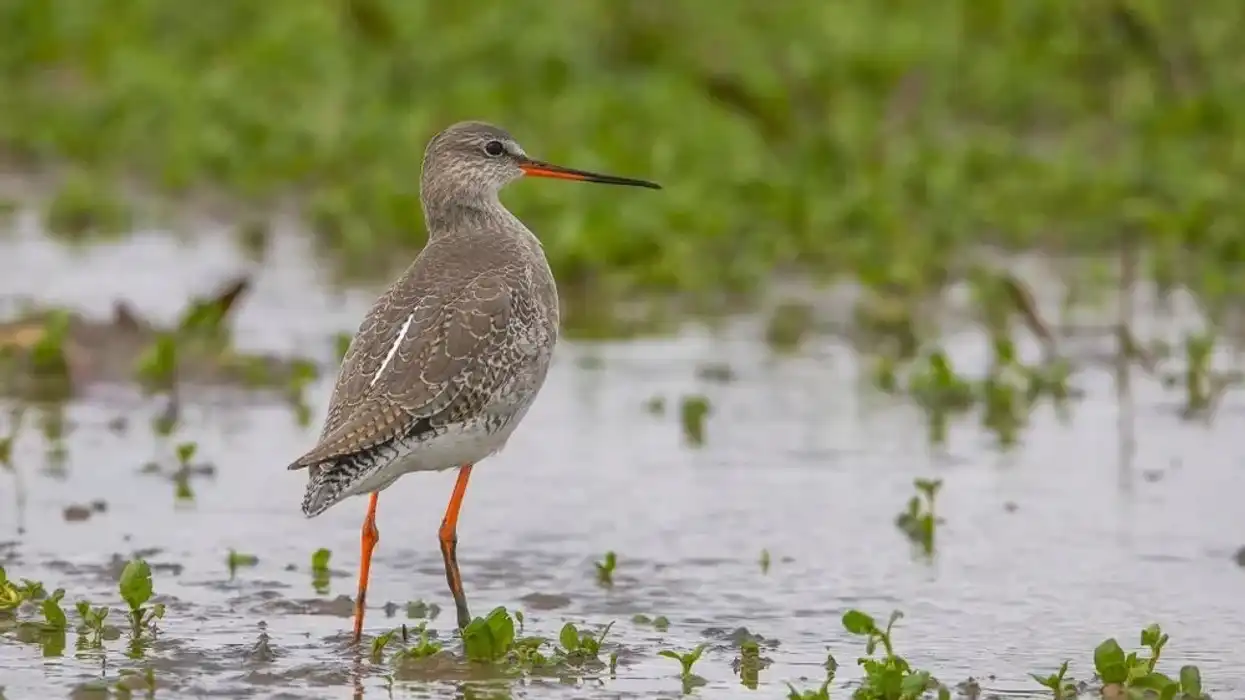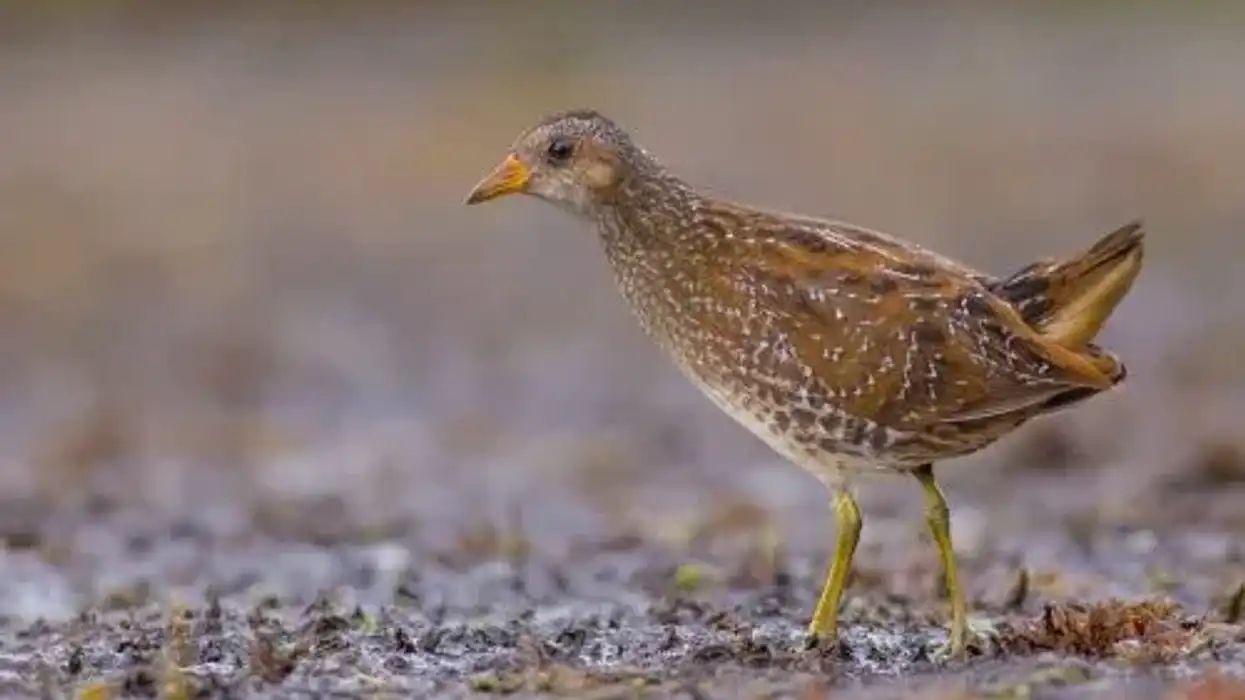Sandpipers are from a group of various shorebirds of the family Scolopacidae (order Charadriiformes). They are quaint-looking, small to medium length birds roughly 6-12 in (15-30 cm) in size.
These little birds throng at inland mudflats and beaches during their migration period. The spotted sandpiper and its sister species, the common sandpiper, make up the genus Actitis of shore-dwelling birds. Woodcocks and snipes are from this same family.
This huge Scolopacidae family is regularly subdivided into different groups of comparable birds. Although these groups do not always cover a single genus, they do form great monophyletic evolutionary lineages.
If you like these fascinating sandpiper facts, you should also read our purple sandpiper facts and solitary sandpiper facts.
Sandpiper Interesting Facts
What type of animal is a sandpiper?
Sandpipers are a massive family of waders or shorebirds. They encompass many species, all referred to as sandpipers, in addition to the curlew and snipe.
What class of animal does a sandpiper belong to?
Sandpipers are different small-sized birds from the family of Scolopacidae that belong to the Aves class.
How many sandpipers are there in the world?
A study shows that the population of sandpipers is at 210-228 pairs as of 2016.
Where does a sandpiper live?
The sandpiper breeds throughout most of temperate and subtropical Europe and Asia during the breeding season and migrates to Africa, southern Asia, and Australia in winter. The eastern fringe of its migration course passes through Palau in Micronesia, in which loads of birds might also additionally accumulate for a stopover in the mud.
What is a sandpiper's habitat?
Different species of sandpipers stay in distinctive habitats, even though most of the species are shorebirds. Most of their species live by beaches, tide pools, mudflats, sand bars, estuaries, and similar habitats alongside the coast other species of this bird habitats areas like the woodlands, meadows, arctic tundra, and forests.
Who do sandpipers live with?
A lot of sandpiper bird species form monogamous pairs. However, a few sandpipers have female-only parental care, a few have male-only parental care, and a few have sequential polyandry.
How long does a sandpiper live?
Birds like the sandpipers have a very long lifespan, and this species of bird can live up to 10 years.
How do they reproduce?
Sandpipers lay three to four eggs into the nest after the breeding season, which is mostly an indistinct depression, or they scrape within the open ground with their legs, somewhat covered with gentle vegetation next to the water.
In the species where each parent incubates the eggs after breeding, females and adult males share their incubation duties in various approaches, each inside and among their species.
In a few pairs, parents switch at the nest in the morning and night to feed and complete their diet so that their incubation measure follows a 24-hour timeline.
In species in which only a single parent incubates the eggs, at some point of the night, the parent sits by the eggs almost constantly and then leaves the nest to feed itself at some warm point of the day.
Chicks hatch after approximately three weeks of incubation and are able to stroll out of the nest and forage for food in some hours of hatching.
A single parent or each of the parents guide and brood the chicks using their wings.
What is their conservation status?
The conservation status of the sandpiper bird species is of Least Concern, as stated by the IUCN Red List.
Sandpiper Fun Facts
What do sandpipers look like?

Sandpipers showcase considerable variety in length and appearance. The extensive range of bodies formed reflects various ecological niches like their colors, mostly brown, and their wings being white.
Within species, there is considerable variance in styles of mature dimorphism.
Males are medium-sized birds and larger than females in ruffs, but numerous sandpipers are smaller than females in the knots, curlews, phalaropes, and godwits. The genders are further sized within the snipes, woodcock, and tringing sandpipers.
Compared to the huge circle of wading birds relatives, the plovers tend to have smaller eyes, narrower heads, and long thin bills. Some have fairly long legs, and most of the species have three forward-pointing feet with a smaller hind toe.
Sandpiper species have more geared bodies for tactile foraging strategies than the plovers in digging the mud ground, which favor extra visible foraging strategies, which is seen in the extreme density of tactile receptors within the pointers of their bills.
These receptors are housed in a moderate horny swelling on the tip of the bill. Bills can be straight, barely upcurled, or strongly downcurved.
How cute are they?
Sandpiper bird facts state that these birds are not very colorful but still are very eye-catching. They are small and fluffy with long legs and a long thin bill.
How do they communicate?
Loud, low frequency, repeated sounds are used for the duration of aerial displays, as territorial alerts and to appeal to mates.
How big is a sandpiper?
The sandpiper is 4.7-26.0 in (12-66 cm) and 7.1-7.9 in (18-20 cm) height. It is 10 times bigger than a sparrow in length.
How fast can a sandpiper move?
These shorebirds can fly up to 60 mph (96.5 kph) at their top speed.
How much does a sandpiper weigh?
Sandpipers weigh approximately 0.81-25.8 oz (23-730 g).
What are the male and female names of the species?
There are no different male and female names for the sandpiper bird species.
What would you call a baby sandpiper?
Baby sandpipers are known as chicks or juveniles.
What do they eat?
The diet of this bird mostly consists of invertebrates. They also like to feed on insects and worms that they dig up from the ground for food.
Are they dangerous?
The sandpiper is not dangerous but may attack or show anger when they are protecting their eggs or chicks.
Would they make a good pet?
These birds do not make appropriate pets. They are basically wild birds, and are not friendly with humans, and do not like interacting. In certain places, it's also unlawful to own, capture, kill, or harass this bird species.
Did you know...
The white sandpiper is a great symbol for problem fixing and going brilliant distances to acquire your goals, both physically and geographically.
Different types of sandpiper
There are many types of sandpipers. They are found everywhere in the north and can be located all around the world except in desert areas.
What are sandpipers known for?
Sandpipers are known for wagging their tails in nervousness.
Here at Kidadl, we have carefully created lots of interesting family-friendly animal facts for everyone to discover! Learn more about some other birds from our seagull facts and white woodpecker facts pages.
You can even occupy yourself at home by coloring in one of our free printable sandpiper coloring pages.









